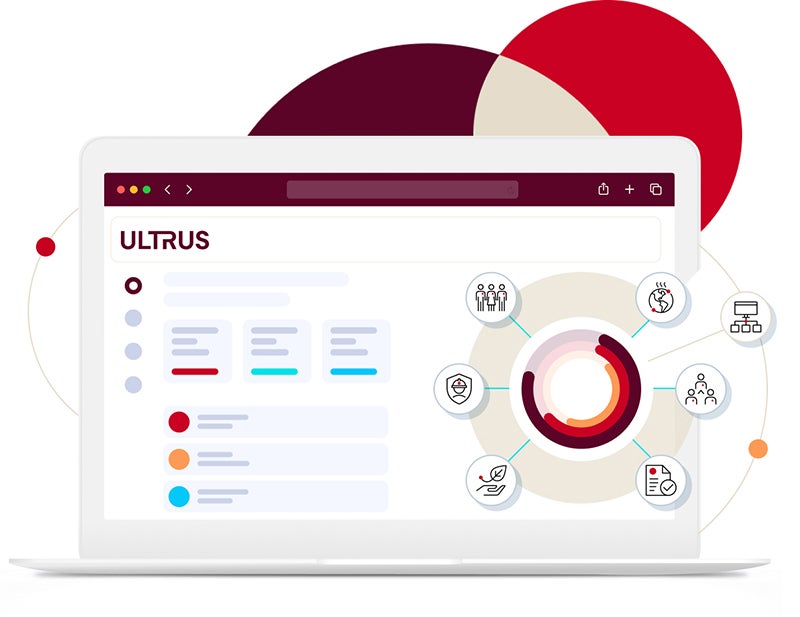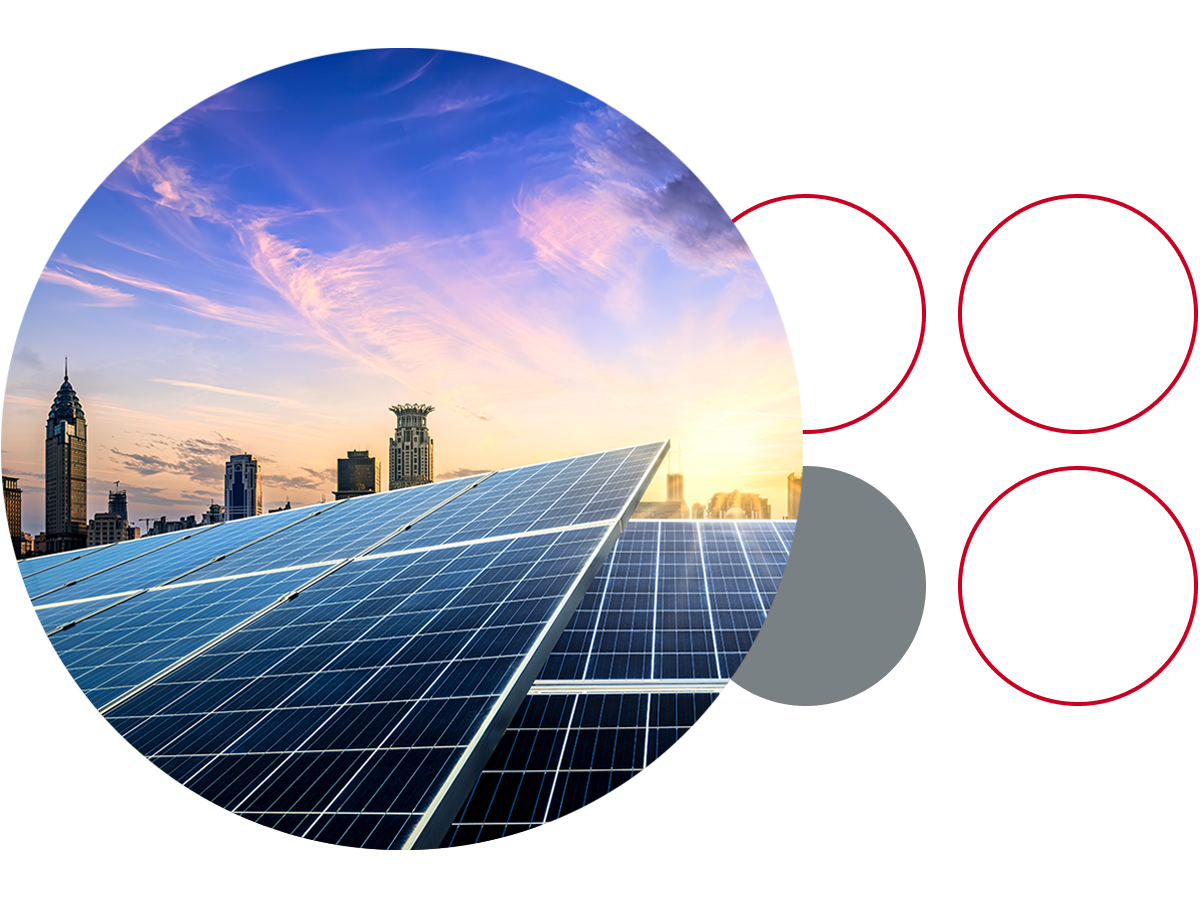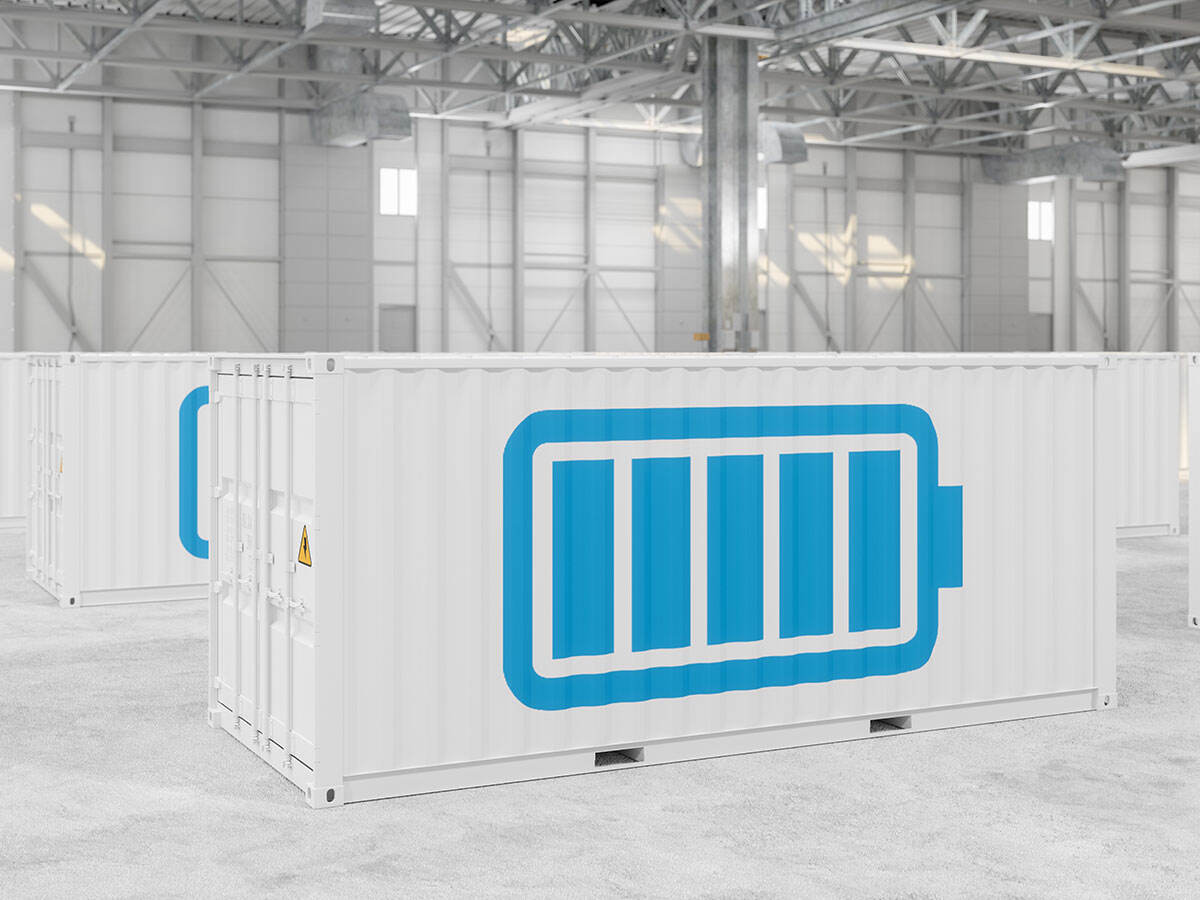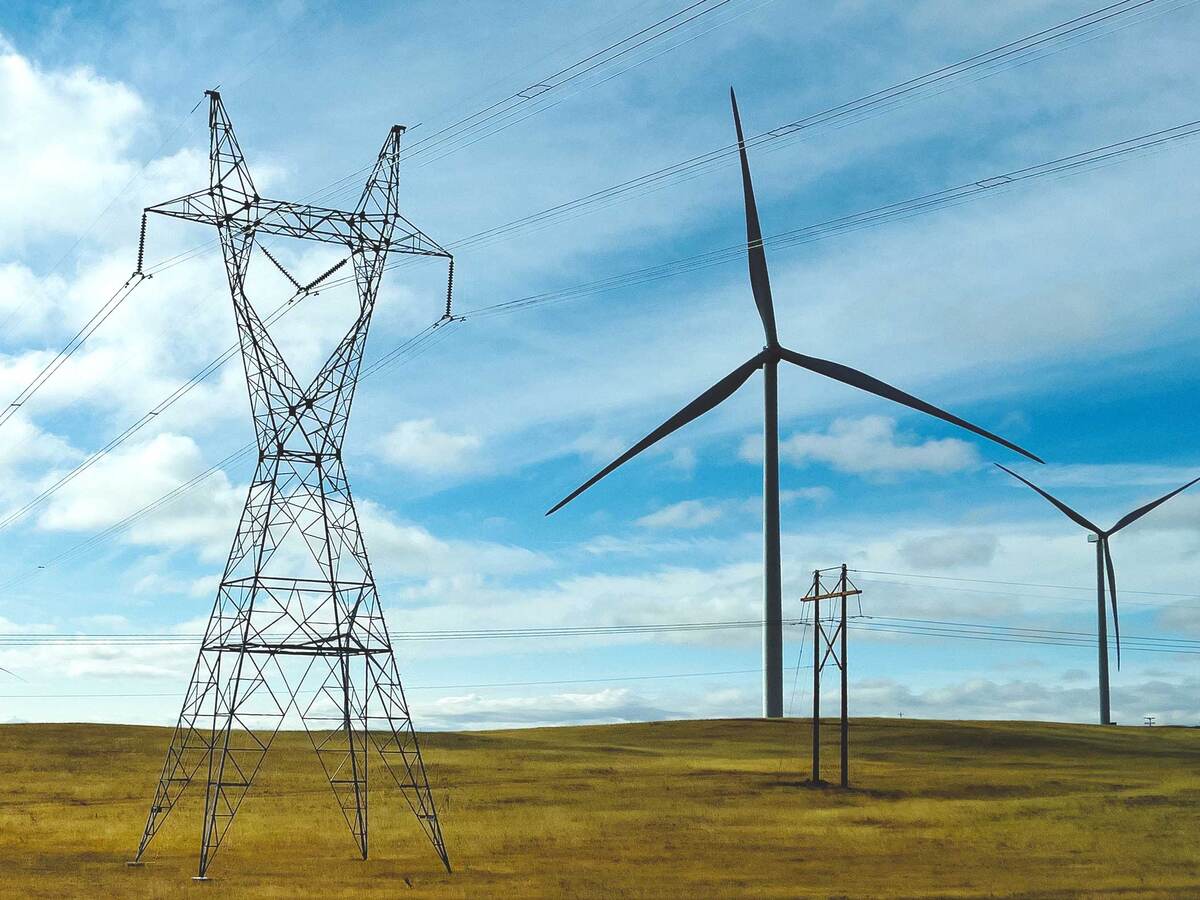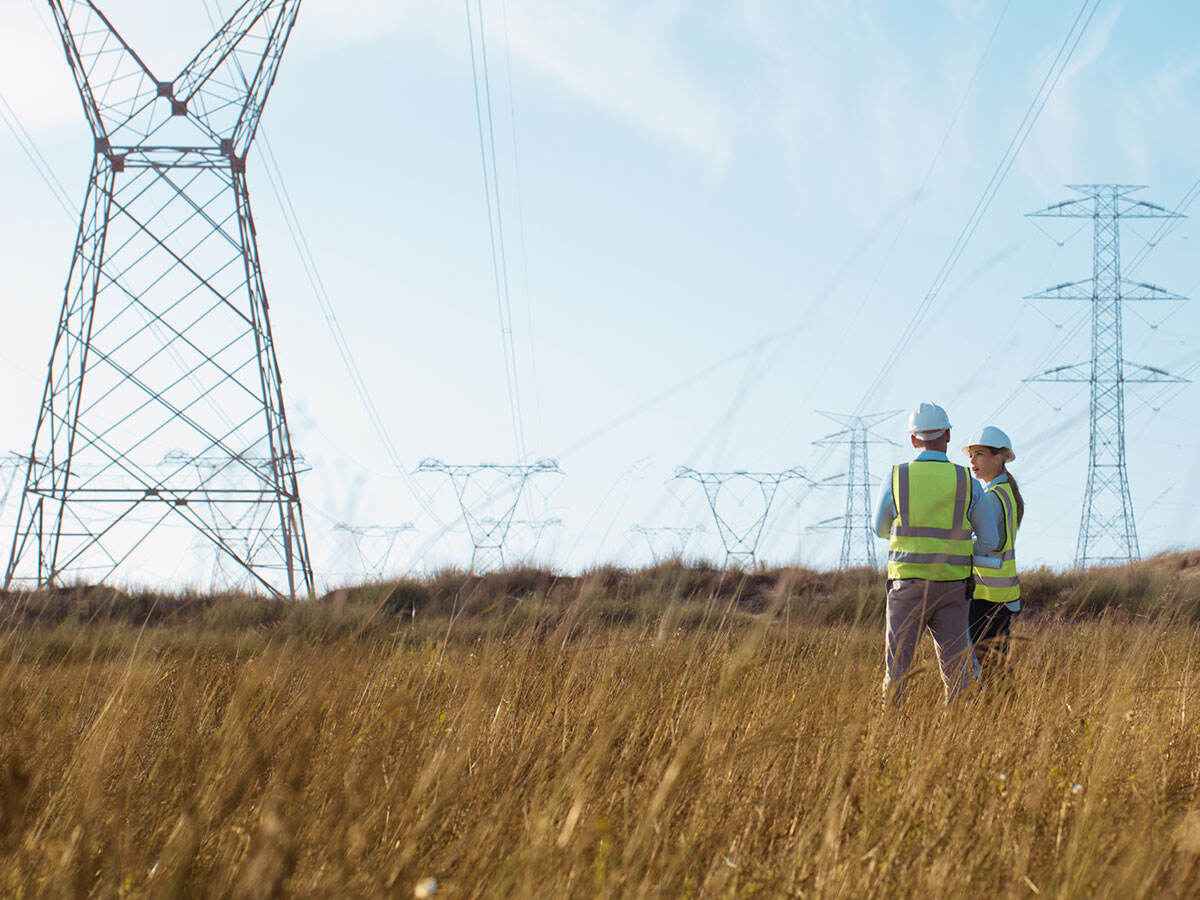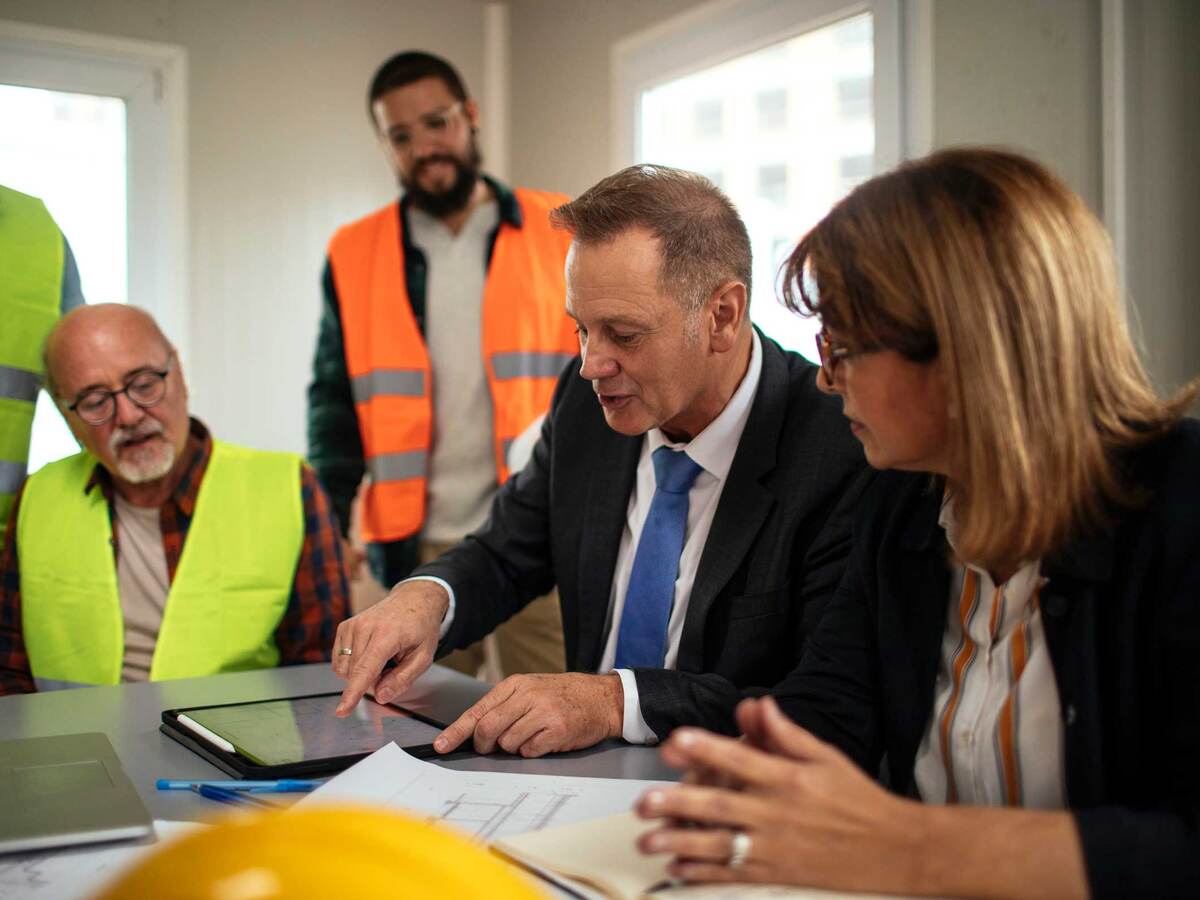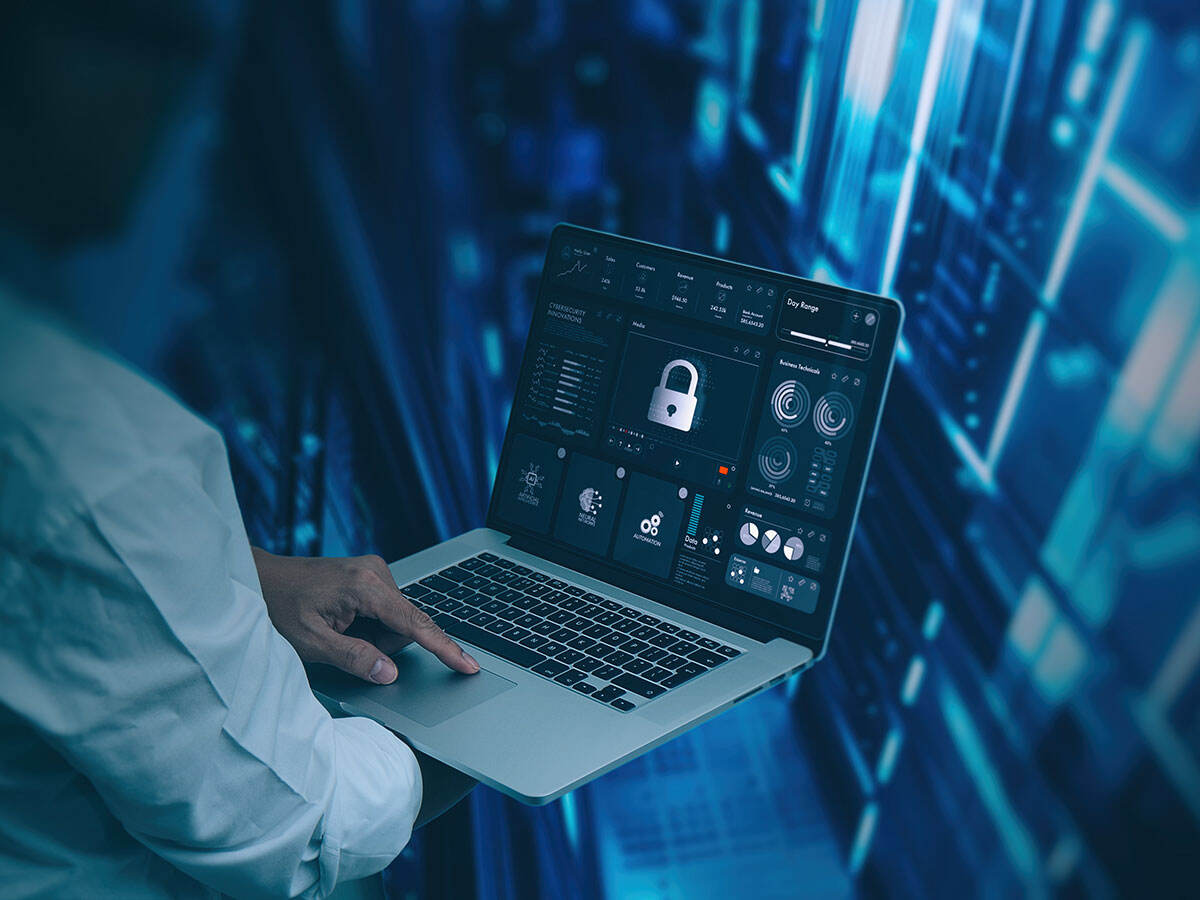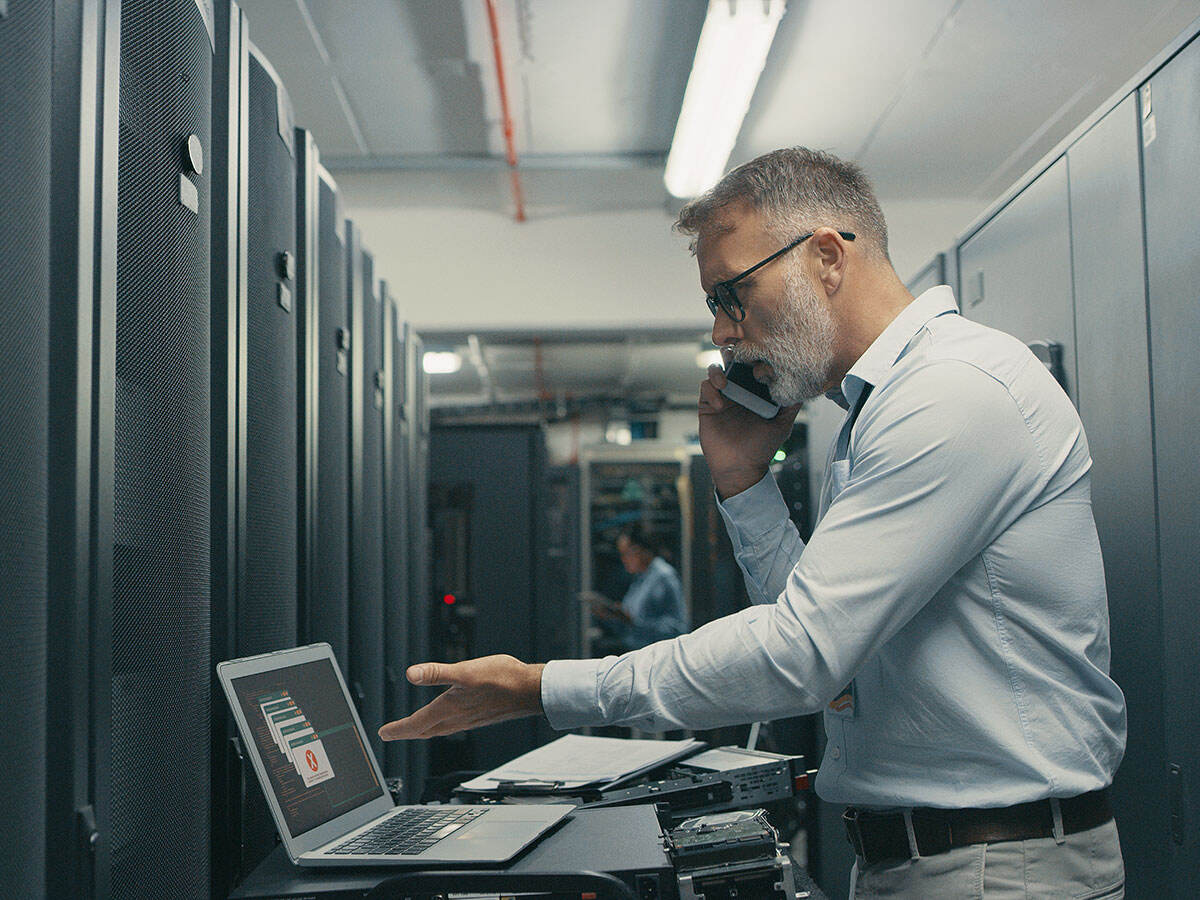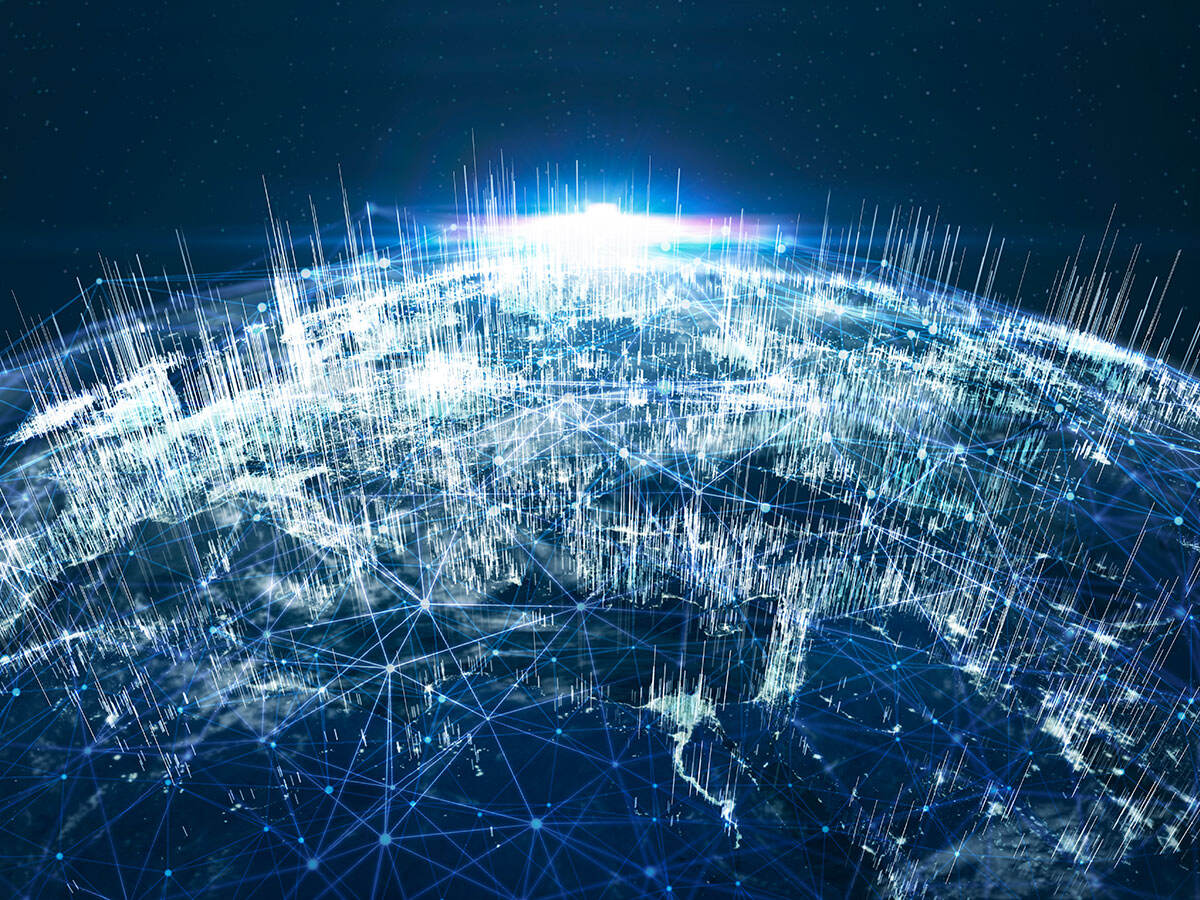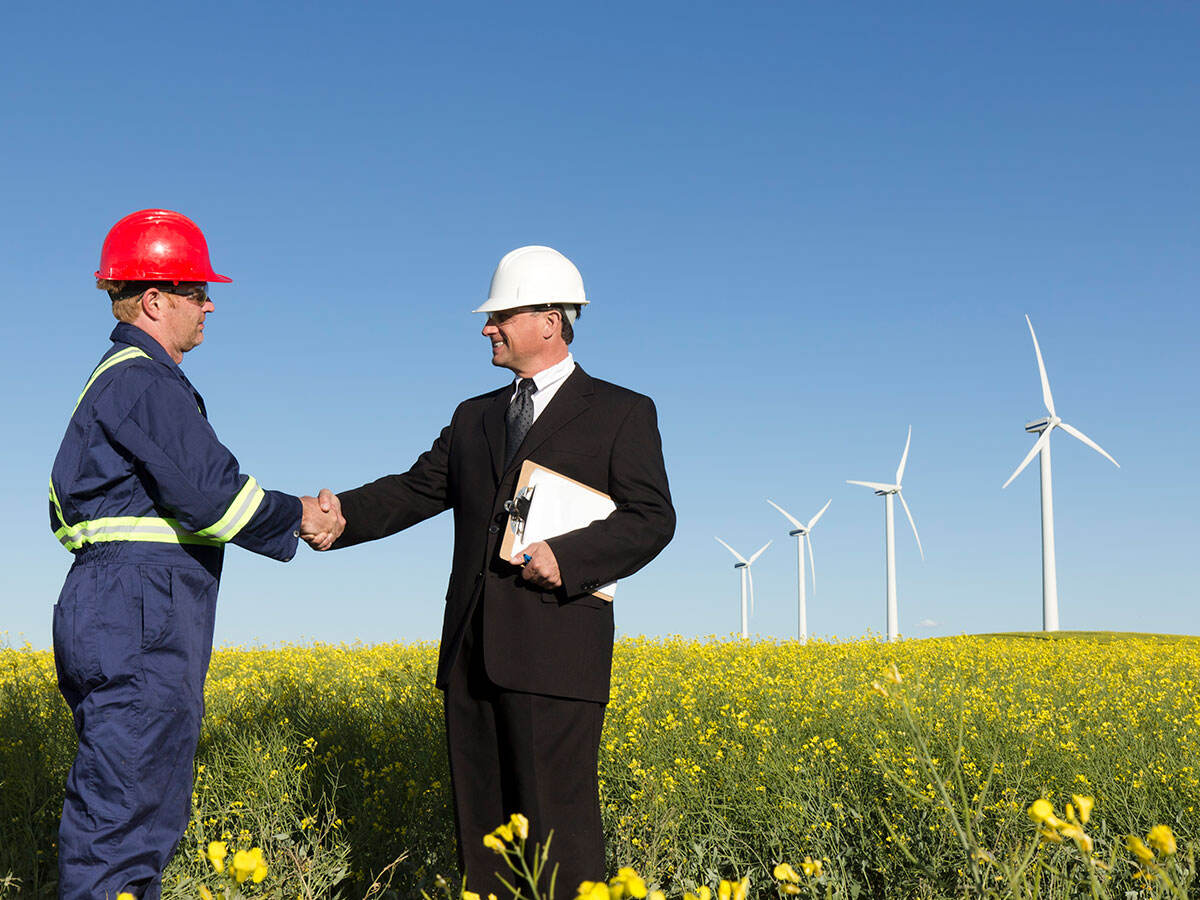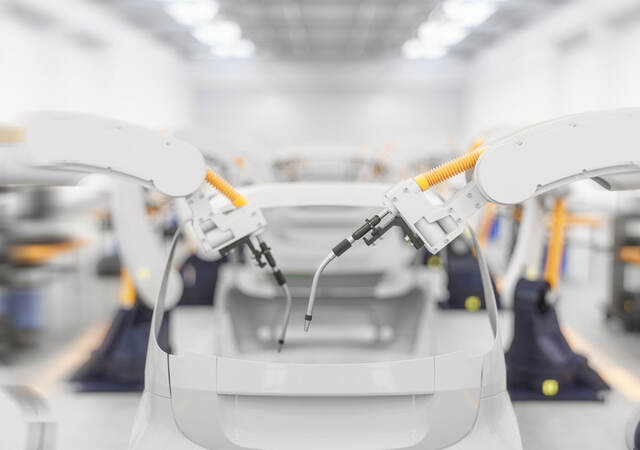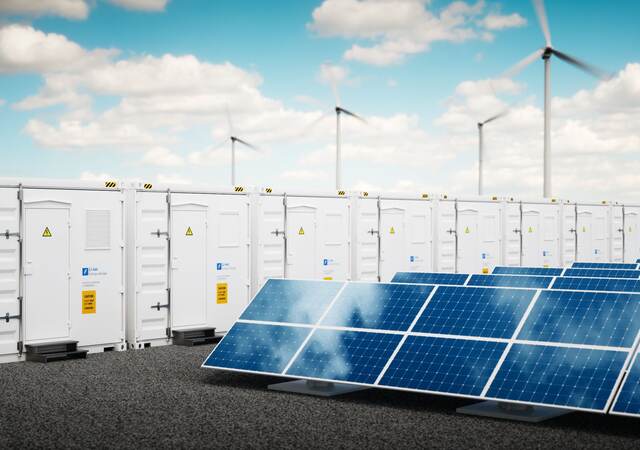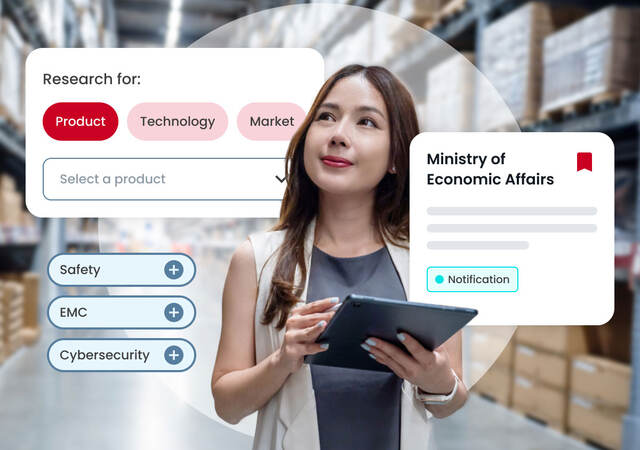The biggest change drivers in power decarbonization: Trends to 2030
Written by Michael Slowinske, Director, Principal Engineering, E&IA
Introduction
Renewable energy is not a trend, it’s a foundational pillar of achieving decarbonization goals. As manufacturers, developers and operators plot a course in this evolving landscape, understanding the key drivers of change is crucial to their success.
This guide explores the primary factors influencing renewable energy adoption and outlines actionable strategies, services and considerations that can help stakeholders on their journeys to positive, profitable and sustainable deployment.
Demand growth
Overview
Global energy demand is projected to rise significantly due to population growth, urbanization and the electrification of many industries. The International Energy Agency (IEA),1 expects global electricity demand to grow by 3% annually over the next decade. A report by the ICF2 states that, in developed markets like the U.S., expanded use of technologies such as artificial intelligence and cryptocurrency mining, as well as growth in manufacturing, may result in a 9% rise of total electricity demand by 2028.2
In parallel, renewable energy additions in the U.S., Europe and China are rising to meet demand growth and help decarbonize power generation. According to Ember’s 2024 Global Electricity Review report, growth in wind and solar met 82%, or 513 TWh, of new demand in 2023, while solar represented the main source of new capacity in general.
Implications for stakeholders
Challenge
As electricity demand surges, the pace of renewable deployment must accelerate to meet new demand and support decarbonizing existing power generation needs. The variability of renewable energy sources like solar and wind can challenge meeting peak demand periods and maintaining grid reliability, introducing demand for assets such as battery energy storage systems.

Response
All stakeholders, from manufacturers to operators and investors, should evaluate how to deploy renewable projects more quickly to meet new demand and decarbonize power generation. Adding energy storage systems to more projects and integrating more battery energy storage capacity on a stand-alone basis to balance supply and demand is also becoming more important. Utilizing new tools and systems and seeking third-party guidance to understand the risks of new projects prior to the development process can speed more efficient, successful deployment.
Recommended services
Energy audits
Comprehensive assessments that evaluate current energy consumption patterns and identify areas for efficiency improvements.
Certifications
Services that evaluate whether renewable technologies meet international safety and performance standards, enhancing credibility and market access.
Project evaluation
Investment and development decisions require a comprehensive assessment of potential risks. Third parties like UL Solutions can partner with renewable energy developers and operators to evaluate projects, help understand bankability and support safer, more sustainable deployment.
Testing and inspection services
Performance testing
Evaluate the efficiency and output of renewable energy systems to assess whether they meet specified performance criteria.
Quality assurance inspections
Perform regular inspections during manufacturing and installation to evaluate compliance with safety and performance standards.
Interconnection challenges
Overview
As renewable energy deployment increases, so does the time needed and complexity of securing interconnection to power grids. The U.S. Department of Energy (DOE) reports that, currently, more than 80% of new renewable energy projects face interconnection delays.4 In addition, the National Renewable Energy Laboratory (NREL) indicates that interconnection costs can account for up to 30% of total project costs.5
Implications for stakeholders
Challenge
Interconnection delays can slow project timelines and increase costs. Complex interconnection procedures, varying standards across jurisdictions and insufficient grid capacity can prolong interconnection timelines and other necessary project approvals. These delays affect financial returns and can deter investment in renewable energy projects in general.

Response
A thorough understanding of local interconnection standards and active engagement with grid operators and other stakeholders can support project development. Proactive actions include evaluating how much time developers will need to secure interconnection and how to expedite projects, as well as assessments of other needs, such as environmental permitting, that can slow development. Advocating for standardized interconnection protocols can also help streamline procedures and reduce costs.
Recommended services
Advisory
Expert guidance on navigating interconnection processes, including feasibility studies and application submissions.
Project evaluation and testing services
UL Solutions can help renewable energy developers and/or operators evaluate risks including interconnection risks and compatibility of systems and hardware with grid requirements.
Testing and inspection services
Interconnection testing
Assessments that evaluate whether renewable energy systems can safely and effectively connect to the grid.
Compliance certification
Certification services to assess adherence to interconnection standards and regulations.
Standards development challenges and opportunities
Challenge
Interconnection delays can slow project timelines and increase costs. Complex interconnection procedures, varying standards across jurisdictions and insufficient grid capacity can prolong interconnection timelines and other necessary project approvals. These delays affect financial returns and can deter investment in renewable energy projects in general.
Opportunity
Advocating for harmonized interconnection protocols can streamline processes and reduce costs. Stakeholders can collaborate with industry associations to push for uniform standards that facilitate interconnection across jurisdictions and work with third parties to stay up to date on evolving frameworks.
Regulatory changes
Overview
The regulatory landscape for renewable energy is constantly evolving, with governmental entities implementing policies to promote adoption and reduce emissions. According to the United Nations, as of June 2024, 107 countries, making up more than 80% of global greenhouse gas emissions, have set net-zero emissions targets, putting pressure on regulatory frameworks to evolve accordingly.6 The Global Renewable Energy Policy Network (REN21) reports that renewable energy policies have been adopted in over 190 countries.7 In the U.S., spurred by incentives from the Inflation Reduction Act, more than 80% of capacity additions to the U.S. power grid in the first half of 2024 came from solar and battery energy storage systems.8
Implications for stakeholders
Challenge
Staying compliant with various regulations as they evolve can be daunting and resource intensive task. Frequent regulatory changes can create uncertainty, making it difficult for developers and operators or investors to plan for, invest in, and develop projects. The intricacies of multiple regulatory frameworks can also lead to compliance risks.

Response
Developing a proactive compliance strategy that anticipates regulatory changes can be helpful. Stakeholders can invest in regulatory monitoring tools and engage with legal experts or third parties to stay informed about upcoming changes. Building relationships with policymakers can also provide insights into potential regulatory shifts.
Recommended services

Regulatory guidance
Engage outside experts to stay up to date on regional, national, and international policy developments affecting renewable energy.
Training programs
Participate in workshops and seminars designed to educate stakeholders on regulatory compliance and best practices.

Project evaluation
Investing in or developing a project requires a meticulous review of all assumptions. UL Solutions can work with renewable energy developers and operators to evaluate projects across key risks, including regulatory ones.
Testing and inspection services
Regulatory compliance testing
Services to evaluate renewable technologies’ compliance with specific regulatory requirements.
Certification for compliance
Certification services that assess adherence to regulatory standards, enhancing marketability.
Cybersecurity
Overview
The digital transformation of the power grid will create a larger attack surface area for cyber threats. According to Security Scorecard9, 90% of the world’s largest energy companies - and 100% of the top 10 U.S. energy companies - experienced a third-party breach in 2023. The U.S. Department of Energy, Office of Energy Efficiency & Renewable Energy has regularly emphasized the need for enhanced cybersecurity protocols in energy management systems.
Increased cybersecurity risks will require enhanced and proactive cybersecurity measures and assessments to test new products, protect critical infrastructure and safeguard the reliability of power grids.
Implications for stakeholders
Challenge
As energy systems become more digitized, distributed, and interconnected, the potential attack surface for cybercriminals expands, leading to increased risks of data breaches and operational disruptions.

Response
To safeguard power systems, cybersecurity must become a priority in software development and infrastructure deployment. Comprehensive cybersecurity frameworks should include regular risk assessments, employee training and incident response plans. Collaborating with cybersecurity experts to develop robust security protocols can help mitigate risks, as can testing and certifying products for their safety and performance attributes pertaining to cybersecurity.
Recommended services

Software systems
Development of customized software for energy management that incorporates testing and certification to cybersecurity safety and performance standards.
Cybersecurity assessments
Comprehensive evaluations of existing cybersecurity measures to identify potential gaps and opportunities for enhancements.
Testing and inspection services

Software testing
Rigorous testing of software systems to evaluate functionality, security and compliance with industry standards, especially pertaining to cybersecurity.

Cybersecurity certification
Services that assess the security measures of software and systems against recognized cybersecurity standards.
Standards development challenges and opportunities
Challenge
Rapid technological advancements can lead to outdated cybersecurity standards, increasing vulnerabilities.
Opportunity
Contributing to the development of new cybersecurity standards can enhance protection across the industry. Stakeholders can participate in industry groups focused on cybersecurity to advocate for relevant standards that address emerging threats as well as educate other entities on their innovation and development plans and what new risks they may introduce.
Technological innovations
Overview
Technological advancements in energy storage systems, smart grids and more dynamic energy management software are crucial for enhancing the efficiency and reliability of renewable energy systems. According to McKinsey, global demand for lithium-ion batteries (across both transportation and power grid applications) is expected to grow from 700 GWh in 2022 to 4.7 TWh by 2030.10 Further, the International Renewable Energy Agency (IRENA) estimates smart grid technologies could reduce energy consumption by up to 30%.11
Implications for stakeholders
Challenge
Rapid technological shifts can create uncertainty and require significant investment in new systems and training. Stakeholders may struggle to keep up with the pace of innovation, leading to increased costs associated with upgrading systems or safety, performance, and compliance risks if systems like quality control don’t keep up.

Response
Staying informed about emerging technologies and their applications is essential to maintain a competitive edge. Stakeholders can invest in continuous education and training programs for their workforce to evaluate whether they are equipped to implement and manage new technologies. Collaborating with technology providers and research entities can also facilitate understanding and integration of the latest innovations.
Recommended services
Due diligence
Understand and mitigate risks inherent in your wind and solar projects from a team of leading renewable energy technical advisors.
Functional safety
Understand the safety, cybersecurity and other vulnerabilities inherent in networked energy transition technologies which complicate the assessment and implementation of functional safety.
Testing and inspection services
Prototype testing
Evaluation of new technologies in controlled environments to assess performance and safety.
Certification for new technologies
Services that assess innovative systems against established standards, as well as new standards and certifications that may be developed to keep up with evolving technologies.
Standards development challenges and opportunities
Challenge
The rapid pace of innovation can lead to a lack of relevant standards for new technologies. This can create confusion and slow adoption.

Opportunity
Keeping up to date with standards and certification development work can help stakeholders prepare for new requirements. Many third parties, including UL Solutions, participate in working groups and industry boards and can offer insight into the landscape of standard and certification evolutions.
Conclusion
Decarbonizing power generation and scaling renewable energy present multifaceted challenges that require a comprehensive understanding of the underlying forces at play. By leveraging third party guidance and expert services, adopting proactive project de-risking strategies, testing and certifying products to relevant standards, and staying on top of new safety and performance standards and certifications, renewable energy stakeholders can position themselves for success and can help accelerate the transition to a more sustainable future.
